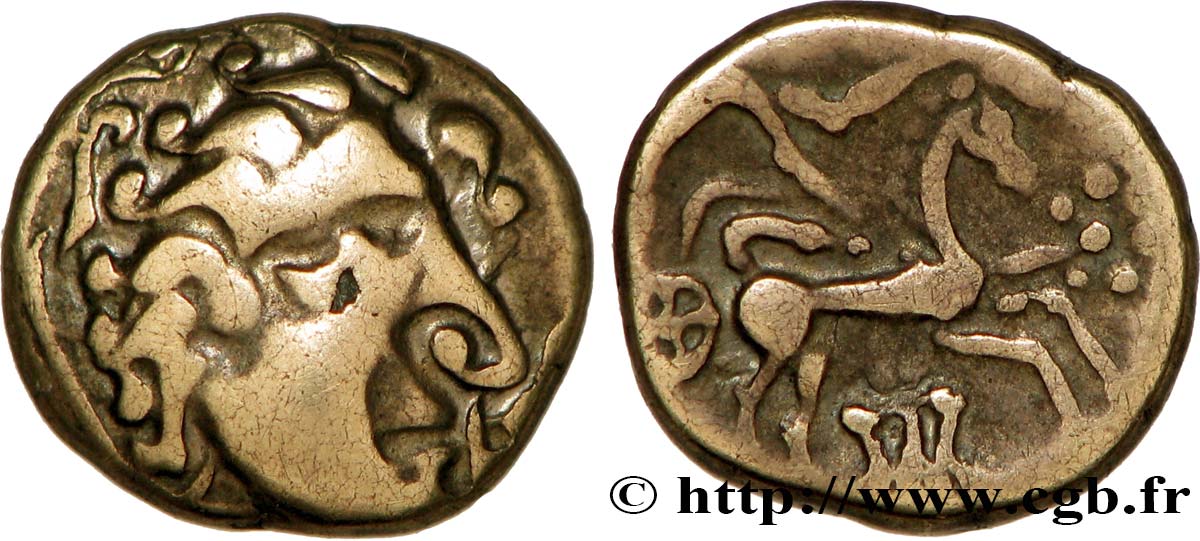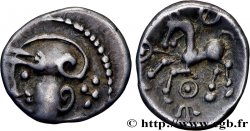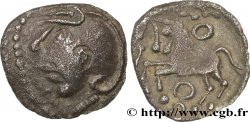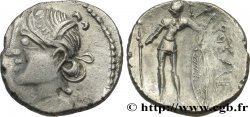Live auction - bga_331048 - GALLIA - ÆDUI (BIBRACTE, Area of the Mont-Beuvray) Quart de statère en électrum à la lyre, type de Chenôves
Чтобы принять участие в торгах, вы должны войти в систему и стать подтвержденным участником аукциона. Войдите, чтобы сделать ставку. Ваш аккаунт будет подтвержден в течение 48 часов. Не ждите до закрытия торгов, чтобы зарегистрироваться.Сделав ставку на данный товар, вы вступаете в юридическое соглашение на покупку выбранного товара и нажатием кнопки «Сделать ставку» подтверждаете принятие вами условий интернет-аукционов cgb.fr.
Ставка может бить сделана только в полном эквиваленте евро. Торги закроются согласно времени, указанному в описании товара, все ставки, сделанные после закрытия торгов, учитываться не будут. Не следует откладывать предложение вашей ставки до последнего момента, так как система может не успеть обработать вашу заявку, и ваша ставка не будет принята. Более детальную информацию вы найдёте здесь: FAQ по интернет-аукционам.
Все ставки победителей подлежат комиссии 18%.
Все ставки победителей подлежат комиссии 18%.
| Оценить : | 1 500 € |
| Цена : | 970 € |
| Максимальная предлагаемая цена : | 1 850 € |
| Конец торгов : | 31 March 2015 14:58:31 |
| Участников : | 2 Участников |
Тип Quart de statère en électrum à la lyre, type de Chenôves
Дата: c. 70-50 AC.
Монетный двор / Город: Autun (71)
Металл: electrum
Диаметр: 10,5 mm
Ориентация осей монеты: 11 h.
Вес: 1,72 g.
Редкость: R2
Комментарии о состоянии
Très bel exemplaire frappé sur un flan relativement large et légèrement scyphate. Droit et revers complets, avec une frappe agréable et une belle patine de collection, homogène et brillante
Происхождение:
Cette monnaie provient de la collection M. R. de Dijon
Лицевая сторона
Аверс: легенда: ANÉPIGRAPHE.
Аверс: описание: Tête humaine laurée à droite, la chevelure stylisée ; grènetis.
Обратная сторона
Реверс: легенда: ANÉPIGRAPHE.
Реверс: Описание: Cheval galopant à droite ; au-dessus du cheval, l'aurige ; lyre sous le cheval.
Комментарий
Ces monnaies du type de Chenôves se divisent en deux types ; à la lyre (classe I) ou à la rouelle (classe II). Le traitement de la chevelure correspond exactement à celle du statère DT. 3176 avec les mèches en forme de goutte et aux extrémités enroulées.








 Cообщить об ошибке
Cообщить об ошибке Распечатать страницу
Распечатать страницу Отправить мой выбор
Отправить мой выбор Задать вопрос
Задать вопрос Consign / sell
Consign / sell
 Информация
Информация



